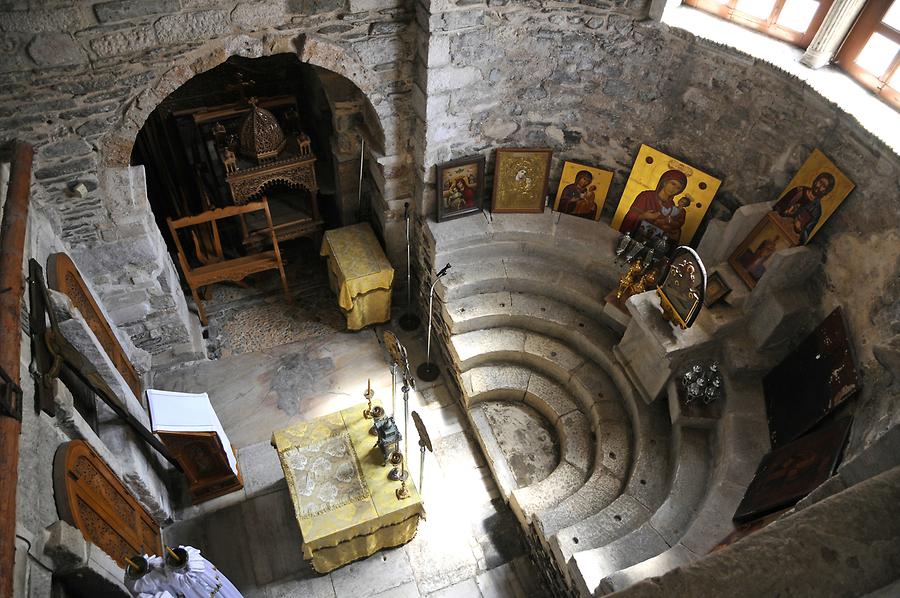Parikia - Panagia Ekatontapiliani; Synthronon#

Parikia - Panagia Ekatontapiliani; Synthronon, June 2010, © Gerhard Huber, under CC BY-NC 4.0 +Edu
Eine Galerie im Kirchenraum erlaubt sogar einen Blick hinter die Ikonostase in den Bereich, der nur Priestern zugänglich ist. Dort befindet sich das Synthronon, eine Reihe halbrunder Stufen, auf denen der Klerus während des Gottesdienstes Platz nahm. In frühchristlicher Zeit war das Amphitheater der Würdenträger vom Kirchenraum aus einsehbar, weil damals die trennende Bilderwand noch nicht in ihrer hochaufragenden Form bestand. Auch hier sind Einflüsse der Antike unverkennbar. Mit Aufkommen des Christentums wurden das antike Theater, die Tragödien und Komödien nämlich gänzlich verboten. Die Menschen hatten sich auf das Wesentliche, den Dienst an Gott in der Kirche, zu konzentrieren. Vielleicht waren die langen Liturgien daher auch ein wenig Theaterersatz, mit dem man die Menschen stärker an den Glauben binden konnte.
A gallery in the church even allows a look behind the iconostasis in the area only accessible to priests. There is the Synthronon, a series of semicircular steps on which the clergy had their seats during the service. In early Christian times, the dignitaries' amphitheater was visible from the church, because at that time the separating picture wall was not yet in its towering form. Again, influences of antiquity are unmistakable. With the advent of Christianity, ancient theater, tragedies and comedies were banned altogether. People had to focus on the essential, the service of God in the Church. Perhaps the long liturgies were therefore a little theatrical replacement. With those liturgies they also could bind the people more strongly to the faith.